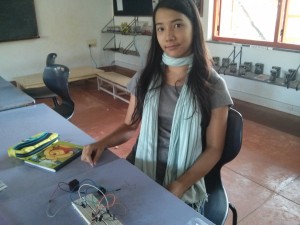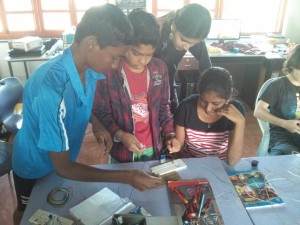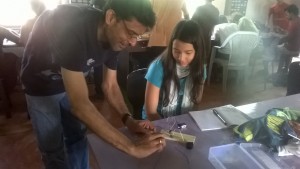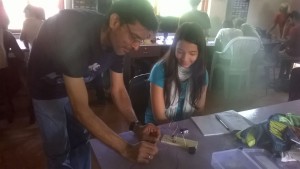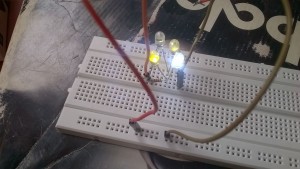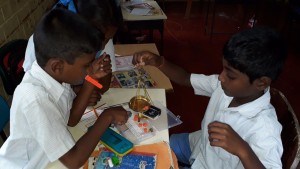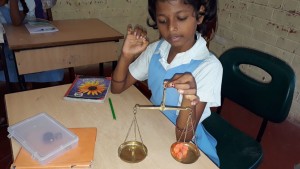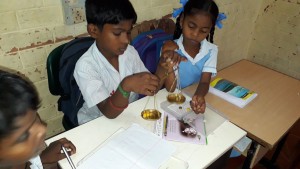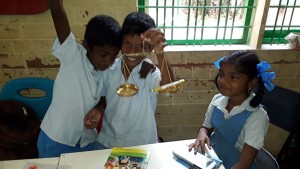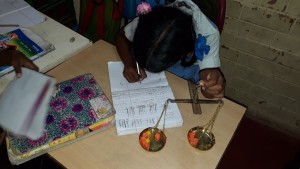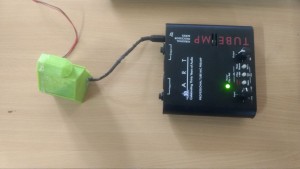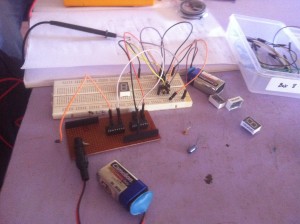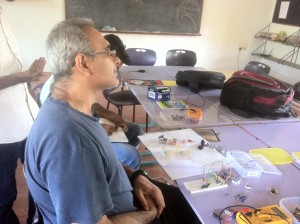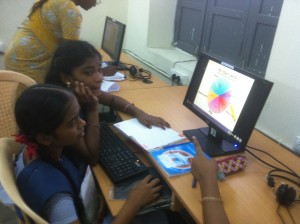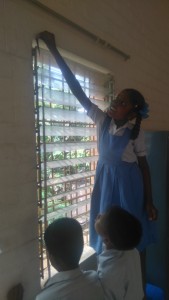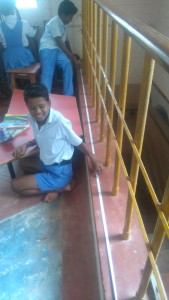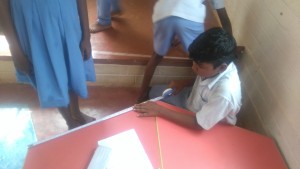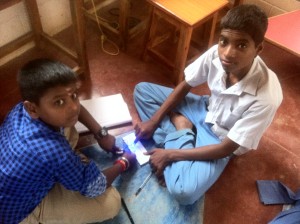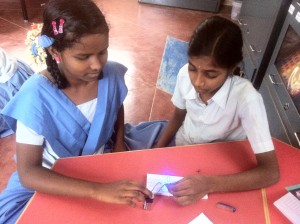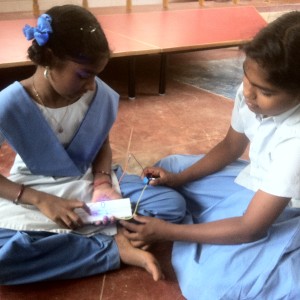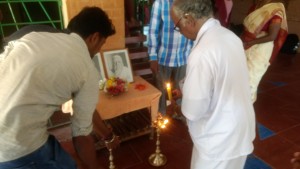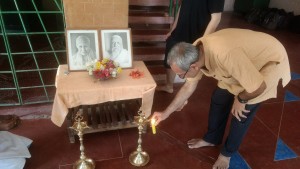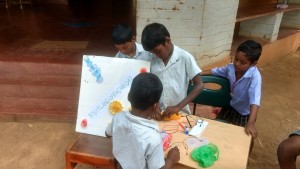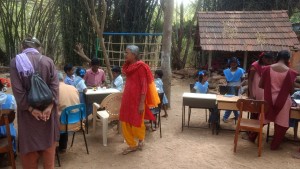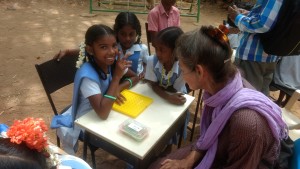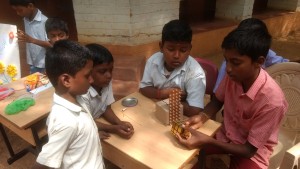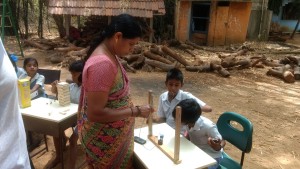A week ago few students ( Kabilan, Vignesh and Punithavel ) came to me with a question and the question was “Akka (sister), what is PIE CHART and how do we do it?. Out of three of them, two doesn’t have a clear idea of what is Fraction. So, we started with Montessori fraction kit. I took the 6th family of the kit ( circle of 6 pieces). I started with a question “6th family has 6 pieces. Then what is the percentage of it ?”.
“100% akka” the answer came out in a fraction of seconds from all of them with confident voices. Then I took out two pieces from that and asked the same question. That time there were two voices started murmuring something which I couldn’t hear clearly ( I think, that’s what they wanted). I waited for few seconds to Punithavel to complete his mental calculation. He said, “It must be more than 50% and less than 75%” and immediately after he shared his answer he started explaining his thought process to his two friends. He told, ” if 3 pieces give 50%, then 4 pieces could be more than 50% but less than 75%. They shook their heads as the sign that they understood it but they seemed to confused too. I felt good about his thought process though he couldn’t tell the accurate answer.
Then I asked them to tell a story for that. This time Kabilan started. “Akka I had 6 cake pieces and I gave two to Vignesh and 4 pieces left. I continued with his story asking,” So out of six, you have only 4?”. They said, “Yes”. I asked,” Can you write that in your notebook?”. Punithtavel asked, ” What akka?”. I replied,” What you just said which should be written as a fraction not as a sentence”.
Two wrote it as 4/6 and one wrote it as 6/4. Each showed it to me to check their “ANSWERS“. I replied saying ” I don’t know. You discuss this among yourself and tell me”. After the discussion, they all came up with 4/6. I said, ” it seems fine but how can I convert this fraction into a percentage?”. Punithavel told, “It’s easy akka. All we need to do is multiply 100 with this fraction” and the rest of two nodded their head as they agreed with punithavel’s idea.
I thought that they were ready to do their pie charts so I asked them to tell me the difference between the percentage which we calculate there with the percentage which given in the text book’s example problem on Pie chart. They found that in the textbook they were multiplying 360 instead of 100 with the fraction part. I told them to go figure it out on your own. Off course it took time because they have to ask their buddies. But they did. Here is what came out after the conversation.


